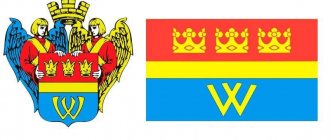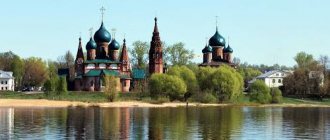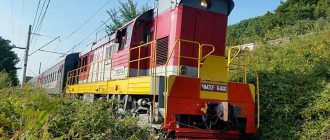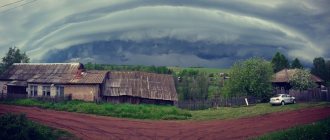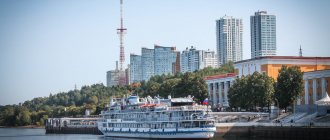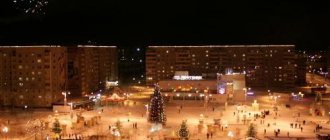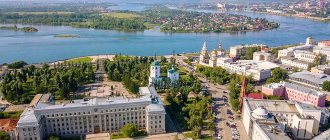This term has other meanings, see Sosnovy Bor.
Pinery
| A country | Russia |
| Status | urban settlement |
| Included in | Sebezhsky district of Pskov region |
| Includes | 28 settlements |
| Administrative center | Sosnovy Bor village |
| Population (2016) | ↗3139[1] |
| Timezone | MSK (UTC+3) |
| Auto code numbers | 60 |
Pinery
- a municipal entity with the status of “urban settlement” in the Sebezh municipal district of the Pskov region.
The administrative center is the urban-type settlement of Sosnovy Bor.
Geography
The territory of the urban settlement borders in the east with the urban settlement "Sebezh" and the rural settlement "Sebezhskoye" (formerly Glembochinskaya volost), in the north - with the rural settlement "Sebezhskoye" (formerly Tomsinskaya volost) of the Sebezhsky district of the Pskov region, in the south - with the Chapaevsky village council of Verkhnedvinsky region of Belarus, in the west - with the Zilupsky region of Latvia.
On the territory of the urban settlement there are lakes: Zasitinskoye (0.8 km², up to 5 m deep) in the north, Dedino or Zalesye I (0.5 km², up to 5.5 m deep), etc.[2]
Settlements
The urban settlement "Sosnovy Bor" includes 28 settlements, including the urban settlement Sosnovy Bor and 27 villages: Dedino, Akhromei, Bezgribovo, Belye Klyuchi, Bondarevo, Burachki, Valtrevo, Vershintsevo, Voitekhovo, Voluevo, Groshevo, Diviny, Dylnovo, Zasitino, Kalnyshi, Krasny Poselok, Mogili, Makei, Shkigino, Posin, Puzyrevo, Selivanovo, Tolstyaki, Usovo, Khroshki, Shikenevo, Vasilkovo.[8][9]
The urban population is 85.55% (2877 residents of the village of Sosnovy Bor), the rural population is 14.45% (or 486 rural residents).[10]
See also: List of settlements in Sebezh region
Pinery
The land on which the city of Sosnovy Bor is located has a beautiful and heroic history. On these lands, on the Baltic coast, the first Russian settlements were founded, merchant ships set out on long voyages, and powerful fortresses were built to protect the borders of ancient Rus'. Previously, on the site of the current city there was the ancient village of Ustya (Ustya), first mentioned as Ustia on the map of Ingermanland by August Bergenheim, compiled from Swedish documents of 1676. The next mention of the village of Ustia is contained in the Swedish “General Map of the Province of Ingermanland” of 1704. As Ustia the village is mentioned in the “Geographical drawing of the Izhora land”, made by Adrian Schonbeck around 1705.
Construction of a power plant and temporary settlement
In the 50s XX century, on the site of the future city, on the sandy hills, a real pine forest still rustled. In 1956, the Council of Ministers of the USSR decided to build a thermal power plant - LenGRES-16 - near the Kalishche railway station. At the same time, the USSR government adopted a program according to which in 1956–1960. The country plans to build four nuclear power plants, including in the Leningrad region. For the needs of the future power plant, equipment was required, so the construction of a plant for boiler and auxiliary equipment and a metal structures plant (later becoming a machine-building plant) will also begin in Kalishche.
In 1956, the first survey party headed by Georgy Semenov arrived here. The party office was located in the house of one of the local residents of the village of Ustye. Workers carried out geodetic and drilling work, took soil samples, and studied water in rivers. The expedition had little equipment at its disposal; much of the work was carried out manually, and local residents were actively involved in it. Winter 1957–1958 in the area where the Leningrad Nuclear Power Plant is located today, centuries-old pine trees were sawed and cut down, making clearings.
In March 1958, a decision was made to build a workers' settlement. In April, a tent city of builders appeared at Kalishche station, and the next month the first Komsomol landing party of those who came to build the village and power plant landed on the banks of the Kovashi River. In August, they began to develop the construction site of Leningradskaya GRES-16 (later the Leningradskaya Nuclear Power Plant was built here).
The first builders - young people who arrived on Komsomol vouchers for the shock construction site - initially had to live at the Kalishche station in railway cars, in the huts of local residents, in tents of 10-40 people each. By November, many residents had been moved from tents to residential buildings in a temporary settlement built on the banks of the Kovashi River. Over the course of several months, 18 barracks (prefabricated panel houses) were erected here, each of which was designed for 14 families, and 13 (according to other sources 10) cottages for engineering and technical personnel. The barracks were provided with water supply and central heating, and later with sewerage. By the end of 1958, the residents of the tent city were mainly relocated to the Temporary Village.
At the same time, the construction of the first structures was underway to ensure the life of industrial facilities and the future village: a filtration station with water tanks, a boiler house, a water intake on the Kovash River, a bakery, a club, a canteen for builders, a wooden elementary school building (senior schoolchildren first attended the Ustyinsk school) , baths
Sosnovy Bor village
By the decision of the Leningrad Oblast Executive Committee of December 10, 1958, a new settlement was registered as part of the Lomonosov District. By decree of the Supreme Council of the RSFSR of December 12, 1958, the settlement was given the status of a workers' settlement and the name "Sosnovy Bor". This name was chosen in honor of the majestic pine forest that surrounded the village at that time. The head of the newly elected Sosnovoborsky village council was A.I. Bashkirtsev.
The Sosnovoborsky village council included the following settlements: the Kalishche plant, the Kalishche railway station, the village of Kalishche, the village of Staroe Kalishche, the village of the Kalishche plant and the town of Kalishche, the barracks of the 84th km. The Kalishchensky village council was transformed into the Ustinsky village council, which included the villages of Ustye, Ruchi, Sisto-Palkino, Lipovo, the village of Smolokurka, the settlements of Kernovo, Rakopezhi, Mustovo, Quarry 71 km and Quarry 75 km.
In 1959, in the village of Sosnovy Bor, a store (now building No. 14 on Borovaya Street), a club with an auditorium for 220 seats (now a tennis club), a bathhouse were put into operation; in 1960 – a nursery-garden (now the tourist club “Iuventa”).
The first street in the village of Sosnovy Bor is Leninskaya Street. Its architectural appearance is noticeably different from other streets that arose later. The two- and three-story houses, painted yellow, are reminiscent of the city's early construction period. Next, Komsomolskaya Street will begin to be built up with more modern houses. The names of the first streets - Leninskaya and Komsomolskaya - reflect the spirit of the time and its heroes.
A grocery store “Baltika” opened on Komsomolskaya Street, which has survived to this day, which, together with the “Manufactured Goods” and “Obuv” stores, belonged to Lomonosovtorg. In 1961, the first post office opened in house No. 1 on Leninskaya Street. The radio amplifier and telephone exchange were transferred to the same building. A year later, another 50 numbers were added to the 80 numbers initially installed on the automatic telephone exchange. The telegraph appeared. On September 1, 1962, the first students were admitted to a secondary school for 680 students at Komsomolskaya, building 2 (later an evening school would operate here).
The cultural centers of Sosnovy Bor were initially clubs on the territory of the fish canning plant and in the village of Ustye, and then their own solid club, built of brick, located on Sokolova Street, 4. Films were shown here, and artists from Leningrad theaters and the Philharmonic performed.
In 1962, construction began on a branch of the Institute of Atomic Energy named after I.V. Kurchatov (since 1996 - Scientific Research Technological Institute (NITI) named after A.P. Alexandrov).
In 1966, a Resolution of the USSR Council of Ministers was adopted on the construction of a nuclear power plant in Sosnovy Bor. In 1969, the Research Institute of Optical-Electronic Instrumentation was created as a branch of the State Optical Institute named after S.I. Vavilov (since 1990 an independent enterprise). On December 23, 1973, the Leningrad NPP was put into operation (the first power unit was launched), by August 1981 it reached its design capacity of 4 thousand megawatts (the fourth power unit was launched), becoming at that time the largest nuclear power plant in the world.
In city status
By the Decree of the Presidium of the Supreme Soviet of the RSFSR dated April 19, 1973, the workers' village of Sosnovy Bor was given the status of a city of regional subordination. This day is considered to be the city's birthday.
By the decision of the Executive Committee of the Leningrad Regional Council of November 12, 1974, the rural settlements of the abolished Ustinsky Village Council (Ustye, Kernovo, Rakopezhi, Smolnensky, Ruchi) entered the borders of the city of Sosnovy Bor, and the villages of Sista-Palkino and Mustovo were transferred to the jurisdiction of the Sosnovy Bor City Council.
In 1996, the City Charter of Sosnovy Bor was adopted, and the first mayoral elections were held.
On August 30, 2007, the capsule was solemnly laid at the construction site of the Leningrad NPP-2.
Today Sosnovy Bor fully lives up to its name - it is a cozy and picturesque city in which it was possible to maintain ecological harmony between the residential environment and nature, which was the result of great creative work of architects and builders, appreciated by the State Prize of the RSFSR already at the beginning of its construction - in 1970.
An excerpt characterizing Sosnovy Bor (urban settlement)
- Yes, and wonderful. “Well, goodbye,” Natasha answered. And the same playful smile, as if forgotten, remained on her face for a long time. Pierre could not fall asleep for a long time that day; He walked back and forth around the room, now frowning, pondering something difficult, suddenly shrugging his shoulders and shuddering, now smiling happily. He thought about Prince Andrei, about Natasha, about their love, and was either jealous of her past, then reproached her, then forgave himself for it. It was already six o'clock in the morning, and he was still walking around the room. “Well, what can we do? If you can’t do without it! What to do! So, this is how it should be,” he said to himself and, hastily undressed, went to bed, happy and excited, but without doubts and indecisions. “We must, strange as it may be, no matter how impossible this happiness is, we must do everything in order to be husband and wife with her,” he said to himself. Pierre, a few days before, had set Friday as the day of his departure for St. Petersburg. When he woke up on Thursday, Savelich came to him for orders about packing his things for the road. “How about St. Petersburg? What is St. Petersburg? Who's in St. Petersburg? – he asked involuntarily, although to himself. “Yes, something like that a long, long time ago, even before this happened, I was planning to go to St. Petersburg for some reason,” he remembered. - From what? I'll go, maybe. How kind and attentive he is, how he remembers everything! - he thought, looking at Savelich’s old face. “And what a pleasant smile!” - he thought. - Well, don’t you want to go free, Savelich? asked Pierre. - Why do I need freedom, Your Excellency? We lived under the late count, the kingdom of heaven, and we see no resentment under you. - Well, what about the children? “And the children will live, your Excellency: you can live with such gentlemen.” - Well, what about my heirs? - said Pierre. “What if I get married... It could happen,” he added with an involuntary smile. “And I dare to report: a good deed, your Excellency.” “How easy he thinks it is,” thought Pierre. “He doesn’t know how scary it is, how dangerous it is.” Too early or too late... Scary! - How would you like to order? Would you like to go tomorrow? – Savelich asked. - No; I'll put it off a little. I'll tell you then. “Excuse me for the trouble,” said Pierre and, looking at Savelich’s smile, he thought: “How strange, however, that he does not know that now there is no Petersburg and that first of all it is necessary for this to be decided. However, he probably knows, but he’s only pretending. Talk to him? What does he think? - thought Pierre. “No, someday later.” At breakfast, Pierre told the princess that he had been to Princess Marya yesterday and found there - can you imagine who? - Natalie Rostov. The princess pretended that she did not see anything more extraordinary in this news than in the fact that Pierre had seen Anna Semyonovna. - Do you know her? asked Pierre. “I saw the princess,” she answered. “I heard that they were marrying her to young Rostov.” This would be very good for the Rostovs; They say they are completely ruined. - No, do you know Rostov? “I only heard about this story then.” Very sorry. “No, she doesn’t understand or is pretending,” thought Pierre. “It’s better not to tell her either.” The princess also prepared provisions for Pierre's journey. “How kind they all are,” thought Pierre, “that now, when they probably couldn’t be more interested in this, they are doing all this. And everything for me; That’s what’s amazing.” On the same day, the police chief came to Pierre with a proposal to send a trustee to the Faceted Chamber to receive the things that were now being distributed to the owners. “This one too,” thought Pierre, looking into the police chief’s face, “what a nice, handsome officer and how kind!” Now he deals with such trifles. They also say that he is not honest and takes advantage of him. What nonsense! But why shouldn’t he use it? That's how he was raised. And everyone does it. And such a pleasant, kind face, and smiles, looking at me.” Pierre went to dinner with Princess Marya. Driving through the streets between the burned-out houses, he was amazed at the beauty of these ruins. The chimneys of houses and fallen walls, picturesquely reminiscent of the Rhine and the Colosseum, stretched, hiding each other, along the burnt blocks. The cab drivers and riders we met, the carpenters who cut the log houses, the traders and shopkeepers, all with cheerful, beaming faces, looked at Pierre and said as if: “Ah, here he is! Let's see what comes out of this." Upon entering the house of Princess Marya, Pierre was filled with doubt as to the justice of the fact that he was here yesterday, saw Natasha and spoke with her. “Maybe I made it up. Maybe I’ll walk in and not see anyone.” But before he had time to enter the room, in his entire being, after the instant deprivation of his freedom, he felt her presence. She was wearing the same black dress with soft folds and the same hairstyle as yesterday, but she was completely different. If she had been like this yesterday when he entered the room, he could not have failed to recognize her for a moment. She was the same as he had known her almost as a child and then as the bride of Prince Andrei. A cheerful, questioning gleam shone in her eyes; there was a gentle and strangely playful expression on her face.
Doctors in a Russian city with a nuclear power plant are sounding the alarm
The city clinic, the first to be hit by a new dangerous virus, was being “sewn up”: doctors left for St. Petersburg and Moscow for decent salaries and payments required by law.
Of course, it was difficult for all doctors in the world during the pandemic. But doctors in Sosnovy Bor talk about completely inhumane treatment, tiny bonuses, non-compliance with direct orders of the president, gigantic overtime - and a complete lack of documents recording this emergency. In large cities, scandals involving non-payment to doctors and the lack of required protective equipment thundered in the media and were in plain sight. It was quieter in small towns, but now doctors in Sosnovy Bor are openly rebelling, as they themselves say, they have “nothing to lose.” Moreover, the world has come close to the “second wave”.
Sosnovy Bor doctors have been waiting a long time for their due payments, but have still received extremely modest bonuses. They wrote to the prosecutor’s office and filed a lawsuit... But the situation is complicated by the fact that all communications and decisions here go through Moscow - the clinic is subordinate to the FMBA (Federal Medical and Biological Agency), that is, for example, it makes no sense to file a claim with the Leningrad Regional Health Committee. “MK” visited Sosnovy Bor until the city again became a “red zone”.
The head of the clinic (full name - Federal State Budgetary Institution Central Medical Hospital 38 FMBA) Ekaterina Sumtsova agrees that the pandemic is an emergency, stressful situation for everyone - both officials and doctors. Naturally, everyone was wrong. But mistakes need to be worked on, as was the case in many institutions where bureaucratic failures were corrected. In Sosnovy Bor, things are still there, with what forces and with what motivation to work during the “second wave” is unclear... In the clinic, for example, four district nurses were ill with COVID-19, but they did not receive insurance payments. In St. Petersburg, such situations turn into loud scandals. Here everything was put on the brakes.
— Our pandemic started on March 15, when people began to come from abroad - and we have St. Petersburg nearby, there is a large flow of people who travel abroad. In addition, at that time there was a seasonal increase in the incidence of influenza - March-April is always a “hot” time for us. – says the manager. “Since April, the first coronavirus patients began testing positive, and in June we entered the “red zone.” By all indications of the situation, additional labor agreements should have been concluded with us, which would have spelled out our harmful factors - as was done in all institutions - but this did not happen.
Work on the bus and additional payment of 503 rubles
As follows from Ekaterina’s story, instead of documented orders, doctors were verbally sent to “work on the bus,” where they were supposed to receive patients with suspected COVID-19.” This bus, attached to the Leningrad NPP health center, is usually used for a mobile seasonal flu vaccination laboratory. But during the “Covid” period, the bus was parked in the hospital campus, making it a reception point for patients with fever - who were considered known to be infected with COVID-19. “We had to be on duty there for twelve to sixteen hours, there was no nurse or cleaner - the doctor did everything alone, and the only disinfectants we were given were ordinary skin antiseptics. But when a patient comes with an acute respiratory viral disease, he may have sputum, vomiting - all this needs to be cleaned and disinfected after each patient, but how? No nurse, no help. There is only one doctor on the bus with napkins. We had to eat in the same room, and, of course, there is no sewage system. In addition, during the period of work on the bus we were not released from work at the clinic. The schedule turned out like this: the doctor saw patients all day long (and the workload was colossal, with the standard twenty-three patients per rate, sixty to seventy people were seen), and after such an appointment he went on duty for the night on the bus. And after the night I went back to the clinic!” - says Ekaterina.
Payment with surcharge.
— Do I understand correctly that the additional payment was minimal?
— We were paid extra for the hours, and absolutely tiny money. At first it was like this everywhere, then by order of the president it was corrected - but not here. And according to the law, after such duty there is a day off and “sleep” - our doctors were deprived of this. When we started talking about this, when I wrote a report about the need to issue an order, to prepare a regulatory framework to document that we are working with COVID-19, so that the right to rest, to additional days for vacation was recorded - this was very negative reacted. The order was issued from afar, but I call it “treacherous” because it stated that we “will be involved in work in the emergency department (including the infectious diseases department).” That is, you see, again we formally do not seem to be working with COVID-19, because the emergency department is considered “clean”. In fact, we were put on a bus and then sent to the infectious diseases department. When a patient with confirmed COVID-19 needed emergency care, nurses called doctors from the emergency room - and then we didn’t even have normal protective equipment.
As a result, we did not fall under the provisions of resolution number 484. And we did not receive payments under resolution 415 in full. Because most of the time, according to documents, we worked in the emergency room. I worked as a therapist and received 503 rubles for June - that’s my bonus. For May - zero rubles.
When the “Covid department” opened at the maternity hospital, seven local therapists were taken from me there, leaving three for the rest of the city of sixty thousand. There is a standard - fourteen calls per doctor per day. We had one hundred and fifty calls a day! We drove home until nightfall; once during the “hot” period they didn’t even let me into the apartment because I arrived at half past one in the morning. I called, I said, I’m a doctor, and they answered: doctors don’t go home at this time.
By the way, in the evenings the doctors walked home. After all, drivers have a working day of up to five. The driver worked and left, and the doctor had a queue of calls. And you need to carry protective suits, cards, and disinfectants with you.
“We were given suits that were not breathable, it was very difficult in them, the doctors had heat strokes. It’s good that Leningrad NPP helped us - they provided us with a car with a driver, although they were not obliged to do this. We saw that LNPP drivers have suits of a completely different quality - breathable, you can live in them. They eventually took pity and gave us from their reserves, saying: girls, we can’t look at you. We worked in these suits that the drivers gave us. We only had three cars – two from the Center for Medical Emergency and one from the Leningrad NPP.” - the manager recalls.
Head: Ekaterina Sumtsova.
The doctors tried to reach the management, interrogate normal suits - there is even a video from a meeting with and. O. by the head of the Center for Medical Emergency Mikhail Davidenko, where he is shown the difference between the suit donated by the Leningrad NPP driver and what the doctors were given at their main job. “We are not asking to be loved, we are asking to be respected,” doctors reasonably note. When Davidenko is told that even with this attitude, the clinic suffered the first blow of COVID-19, he replies:
- Naturally, of course, you are the primary link! The blow fell on you.
“I had to involve shop service doctors in the work - those who work with LNPP employees, with the attached contingent, because there weren’t enough of our own people. – Sumtsova continues. — After all, for example, according to government decree, older doctors had to be protected from working with COVID-19. Doctors of the shop service are generally not obliged by contract to agree to such work, they asked - will we be paid for this? Some doctors quit due to low salaries and went to Moscow and St. Petersburg during the pandemic, where salaries are much higher and there are all the payments required by law - and not based on hours and minutes. The management promised me that there would be payments, I promised this to the doctors. And then we received these pennies - bonuses of five hundred rubles, some doctors received six thousand, nurses - three thousand. And they told me – that’s all, nothing more will happen. What did the employees do to me then!”
No sleep, no rest
Sumtsova shows documents - an order to transfer to a seven-day (!) working week, a statement of additional payments: five hundred three rubles and seven kopecks for the month of June and zero for May. Meanwhile, Resolution 415 provides for additional payment for special working conditions and additional workload - and applies not only to doctors working in hospitals officially repurposed for COVID-19.
Many doctors could not stand this attitude, quit and moved to large cities, where the conditions are more decent. For example, the head of the shop service of the first therapeutic department for servicing the assigned contingent, Tatyana Kotyurgina, quit and went to work in a private St. Petersburg clinic. By profession, she is an occupational pathologist - a specialist in occupational diseases; in “peacetime” she worked with nuclear scientists. We meet her in the city. It is clear that she is very worried about her former colleagues. She says that during the “hottest” times, she supported and encouraged the doctors of her department. Everyone thought that there would be payments, that orders to work with COVID-19 would be issued. It’s just that the regulatory framework is always late, the bureaucratic machine works slowly.
“In my department there were ten doctors and ten nurses,” says Tatyana Gennadievna. “And we were forced by verbal order to work in the infectious diseases department, where there were feverish patients with both suspected COVID-19 and a confirmed diagnosis. We were not formalized in any way; we did not receive any documents in response to our demands.”
The doctor also recalls the story with the bus: it seems that in Sosnovy Bor they will remember it for a long time:
“From April 11, we were also sent to work on the bus, which I categorically refused to do. There are no conditions there: a patient is brought to you at night, no nurses, no one. If you turn on a dim light, it is impossible to carry out any processing. When I refused to be on duty there, there was a wave of indignation, and we were given a small room in the infectious diseases department. It was a doctor's nook, literally six or seven square meters. And no one carried out any processing there, although I constantly said that it was needed. While I was on duty there, I simply watered everything around with a regular skin antiseptic. It often happened that we admitted a patient with a fever, and then his diagnosis of COVID-19 was confirmed. At the same time, in this kind of “office” there were no buckets or rags - I brought my own rag once, cleaned everything there, and then threw the rag away. We didn’t wear personal protective equipment there either, as you can see in the photo - we were given thin surgical gowns, caps and masks.
— When did they start issuing PPE?
— During all the time I worked, they never started. Two doctors who were officially employed in the infectious diseases department and worked during the day wore anti-plague suits. It was shown on TV. And the rest seemed to simply not exist - all the other doctors at the clinic, although they also worked with COVID-19, including those who went to work at night in infectious diseases, were not included in any report card. District and shop doctors worked in the clinic during the day, then were on duty in the infectious diseases department from 16:00 to 8:00 in the morning (the duty was sixteen hours), and in the morning they returned to work at the clinic. At the same time, no days off or additional days were provided for vacation.
"Nameless" doctors
According to Tatyana Gennadievna, when she came on her first duty in the infectious diseases department and tried to enter the automated workplace (an automated workplace - a system that records who exactly is working - approx. A.S. ), she discovered that this was impossible, since doctors were not listed as working in the infectious diseases department. “I started calling the doctors who worked before me, and they told me that absolutely everyone works under the same password, under the name of the same doctor. That is, it is impossible to prove that many people went to work; according to the law, it is as if we had never encountered COVID-19. We were such nameless employees of the invisible front. Our doctors wrote about the problem both through the State Services website and to the prosecutor’s office. Lawyers helped draw up a report for the management of the FMBA - but all this had no effect.” - she says.
— How many such doctors were there? Who worked with COVID-19, but remained “nameless”?
— There are six of mine. The district police officers are approximately twelve people. But my average age of doctors is fifty-eight years old, and I tried not to attract those with a complicated medical history.
At the same time, no one relieved doctors from their main work. “We have an assigned contingent - we need to call them every day, contact them - and there are one hundred and fifty people there. At the same time, there is only one mobile phone from the clinic. We communicated with patients from our personal numbers, spending two to three thousand rubles on this. And then we received bonuses - six thousand for doctors, three thousand for nurses - and that’s it! I repeatedly raised the issue of paying for mobile communication services, but they could only hear me after contacting higher authorities. I and other employees did not receive payments for risks associated with working with COVID-19 under Government Decree 415.”
Tatyana Gennadievna even says that salaries are being cut altogether. After all, they are formed from a salary (which is usually lower than the minimum wage, for example, for Kotyurgina it was about seven thousand rubles) and a qualitative-quantitative bonus. These bonuses, according to the former head of the department, are now being “cut off.” Under such conditions, where does one get the motivation to work hard during the second wave?
The doctors contacted the city prosecutor’s office, which issued a complaint back in August, identifying “violations of labor legislation and legislation on incentive payments in connection with the provision of medical care during the spread of COVID-19.” The text states that the additional payments did not take into account the difference in working conditions.
Will additional agreements be concluded with doctors ahead of the second wave of coronavirus? Will doctors be able to receive payments, including insurance, if they become infected at work? MK sent a corresponding request to the FMBA. They also asked at what stage the correction of violations identified by the prosecutor’s office is at. The official response from the department has not yet come, but I was verbally informed that the doctors of the clinic, in particular Ekaterina Sumtsova, simply had a personal conflict with the management. The FMBA conducted an internal investigation, and the prosecutor's office found no violations. The payments allegedly also arrived – a couple of days after I talked with the doctors. I ask them: did the money really come? 7,143 rubles arrived. “Do not deny yourself anything.”
The situation in Sosnovy Bor is local, but Moscow and St. Petersburg are not the whole of Russia, there are thousands of such small towns in our country, and if in the capital the media and society immediately react to the lack of PPE and payments to doctors, then in this other, big Russia, specialists have to quietly experiencing pandemic hell to the refrain “what did you want, in war as in war.” I would like to believe that the situation will improve, and doctors will be able to work with dignity not only in large cities.
